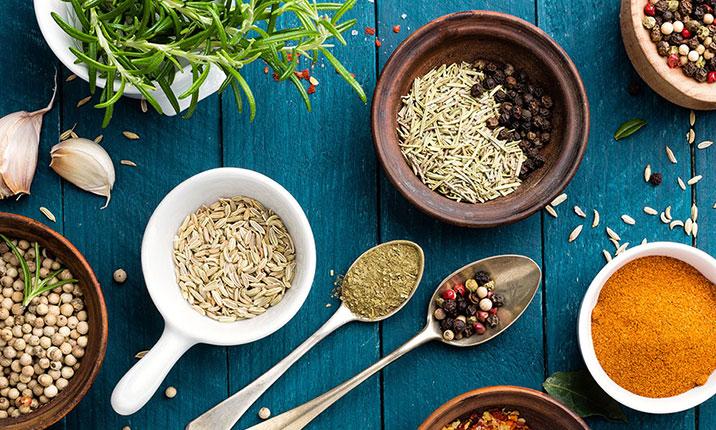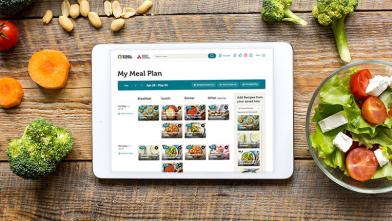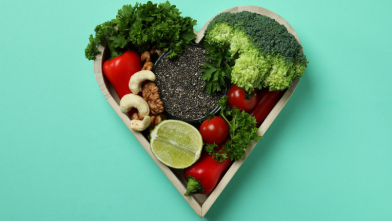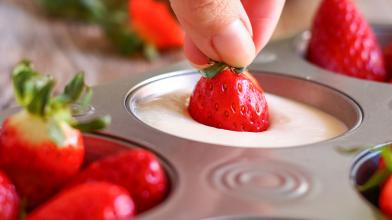If you hear “low-sodium foods” and think you’ll be giving up taste and enjoyment, think again! Healthy home-cooked meals made with quality ingredients and spices are packed with flavor. Whether you’re new to cooking or an experienced chef looking to lower the salt in your meals, these easy tips will help you make healthy dishes taste even better.
1. Add acids
Citrus fruits (oranges, lemons, or limes) and vinegars play a key role in healthy cooking. Acids can act a little like salt in that they work to meld flavors together by bringing out the natural brightness of foods. Try making a quick salad dressing with lemon juice and zest or red wine vinegar with a small amount of oil—or drizzle veggies with balsamic vinegar and infuse grains with lime to help these foods burst with flavor. With this added pop of citrus, you’ll think it’s summertime all year long!
2. Spice can make everything nice
Spices are a great way to add flavor to a dish without adding calories, fat, or salt. A simple chicken breast becomes Jamaican chicken with a little cayenne, cinnamon, and allspice; or Moroccan chicken with some ginger and coriander. Travel the world in the comfort of your home with these cultural spice mixes!
While fresh herbs have more flavor, some are seasonal and can be costly. However, dried spices can help you use more types of seasonings all year round. You can make your own dried spice mixture or use store-bought spices. While dried herbs and spices don’t “expire,” per se, they start to lose their flavor after about six months. Be sure to date your spice jars and replace them every 6–12 months for maximum flavor. Check out this article on DIY spice blends to learn how to create your own multi-use spice mixes!
4. Herb it up
Nothings brings a little extra life and flavor to a meal or dish like fresh herbs—not to mention nutritional benefits from vitamins, minerals, and antioxidants—without adding any extra fat, calories, or salt. Next time you harvest or buy fresh herbs (basil, cilantro, rosemary, or thyme), give them a good chop and mix with a little oil. Add some of the herb-infused oil to veggies or meats before grilling and store the rest in ice cube trays in the freezer so you have ready-to-use marinade or seasoning oil on hand all year long!
You can usually use either dried or fresh herbs in a recipe. Dried herbs are more potent than fresh—use 1 teaspoon of dried herb for every tablespoon of fresh (and vice versa). If you are cooking with dried herbs, add them to the dish earlier in the cooking process, so they have time to release their flavor, and fresh herbs towards the end. Try this recipe for Everyday Herb Oil!
6. Adding flavor on a budget
Jarred herbs and spices can be pricey! Check the international foods aisle for cheaper (and smaller) packages of some common spices. Or find a local store that sells herbs and spices in bulk, they are typically cheaper, and you can buy just what you need!
7. Maximize your herb use
Here are some ideas for sneaking fresh herbs into everyday meals, snacks, and even beverages:
- Herbed salad greens: Toss sprigs of parsley, basil, dill, or rosemary into a salad to add some extra pizzazz.
- Fresh herb pizza: Whether you make your pizza from scratch or buy it, there’s always room to add a few fresh leaves of basil, rosemary, or oregano to the top before you stick it in the oven.
- Herbed ice cubes: When freezing ice cubes, add mint or basil leaves to freshen an ordinary glass of water or iced tea.
- Fresh herbs and tea: Add a few leaves of sage or spearmint in with your hot or iced tea to spice it up a little!
Don’t forget to sign up for Diabetes Food Hub’s e-newsletter where you will get diabetes-friendly ideas and recipes every month.














